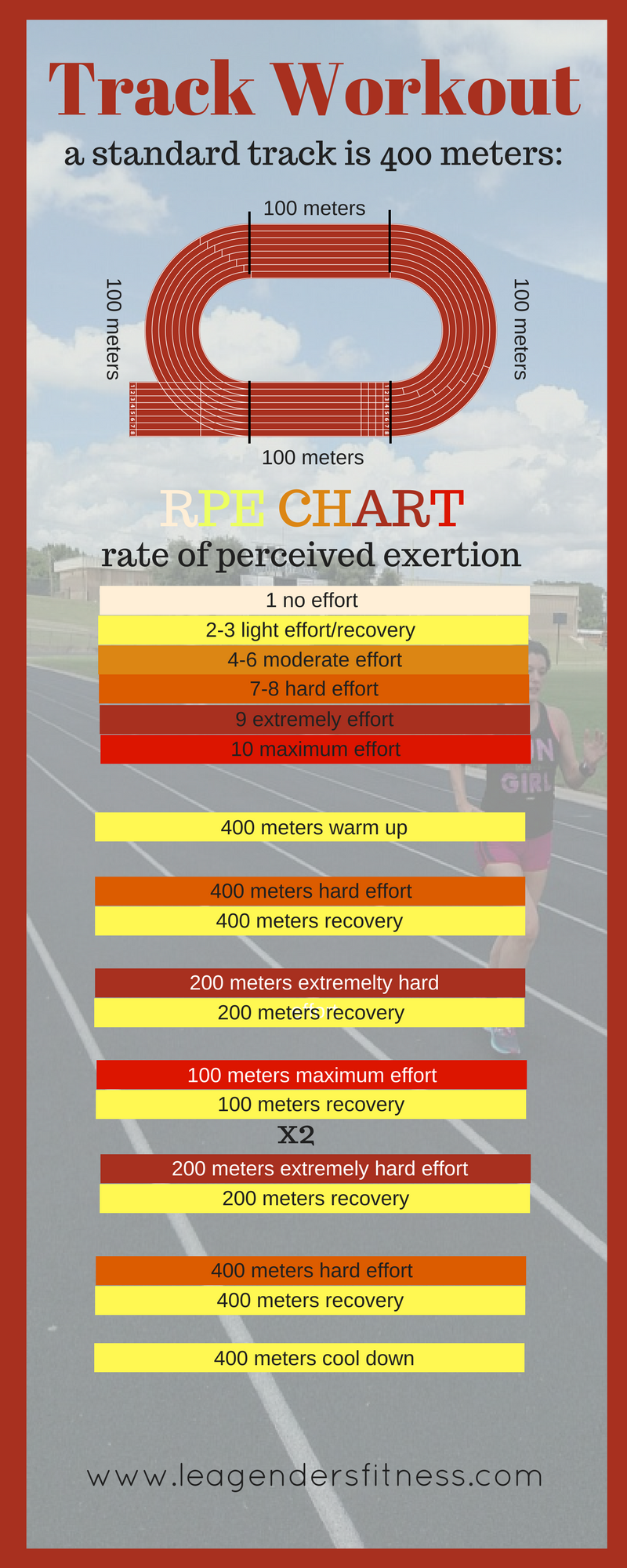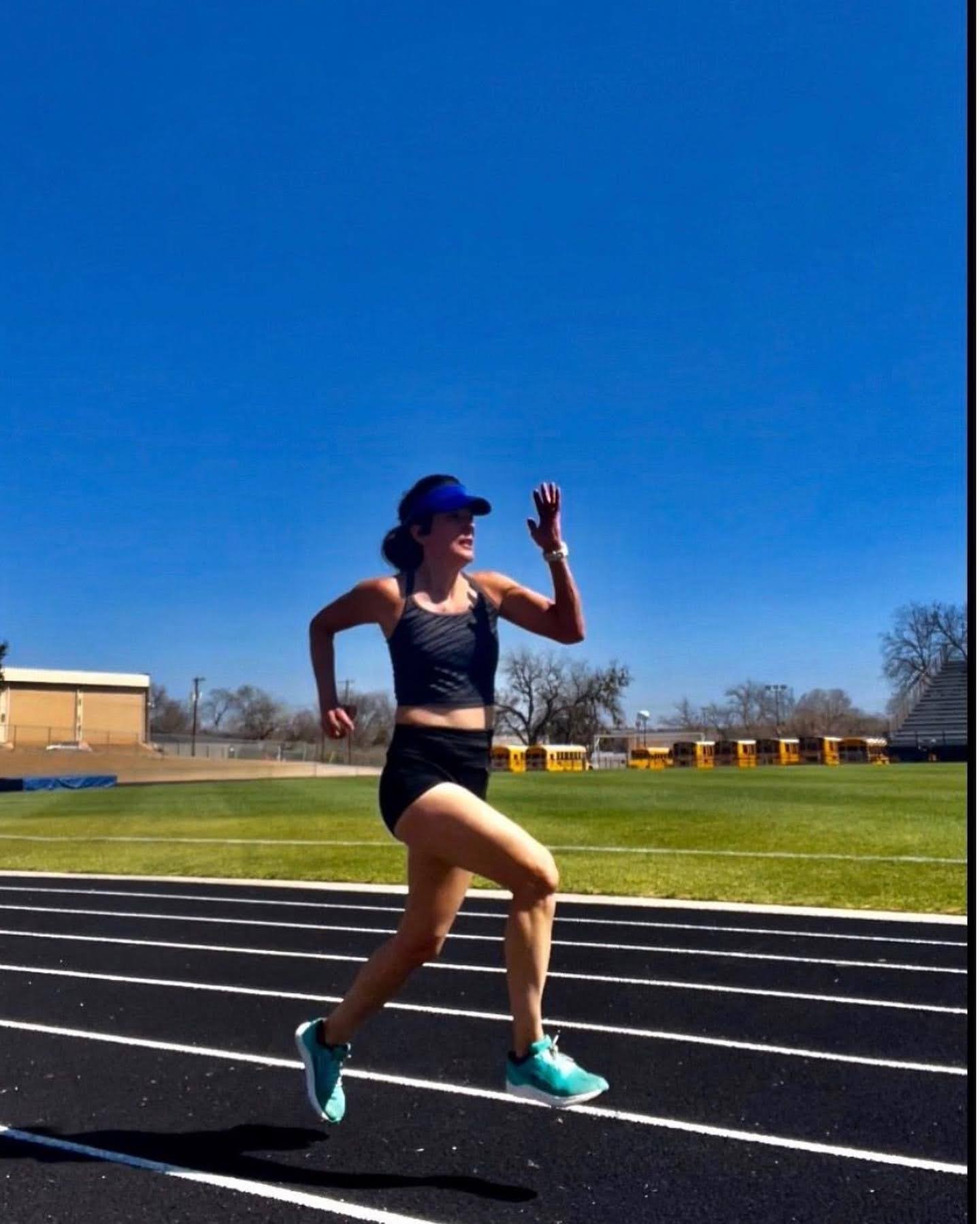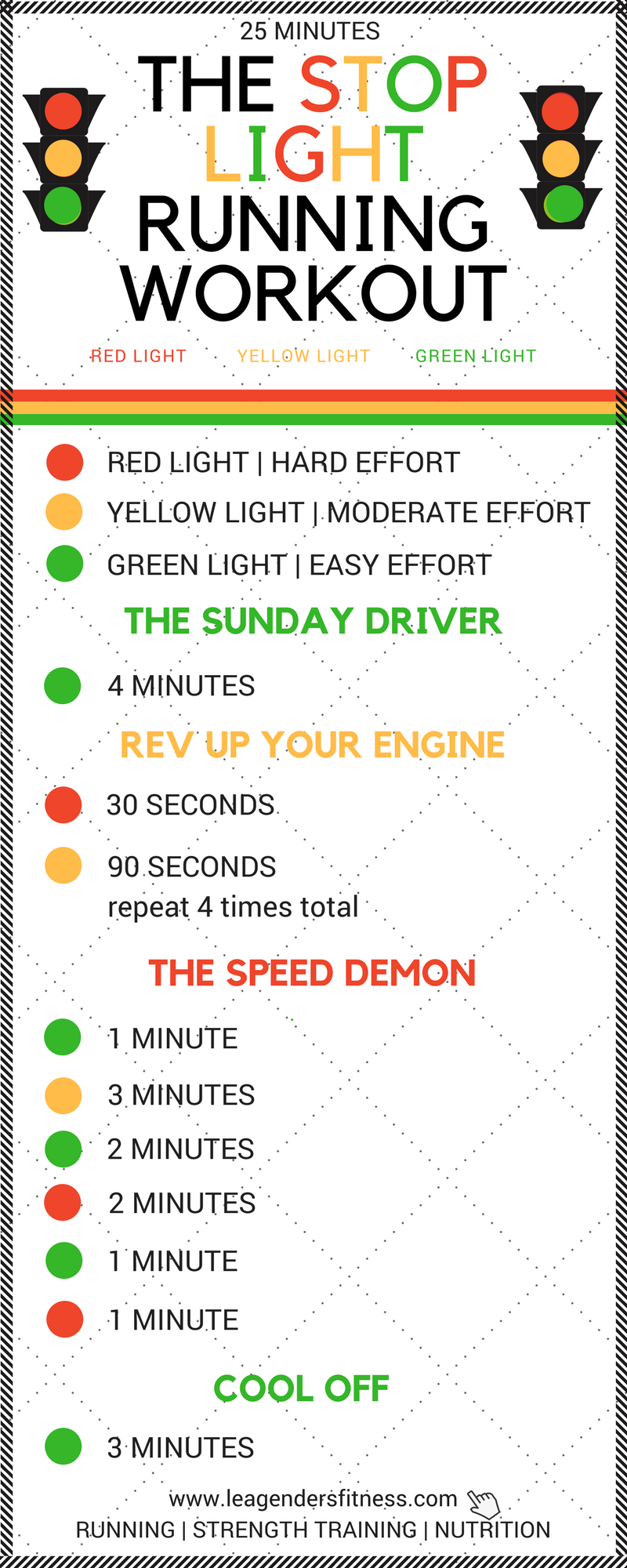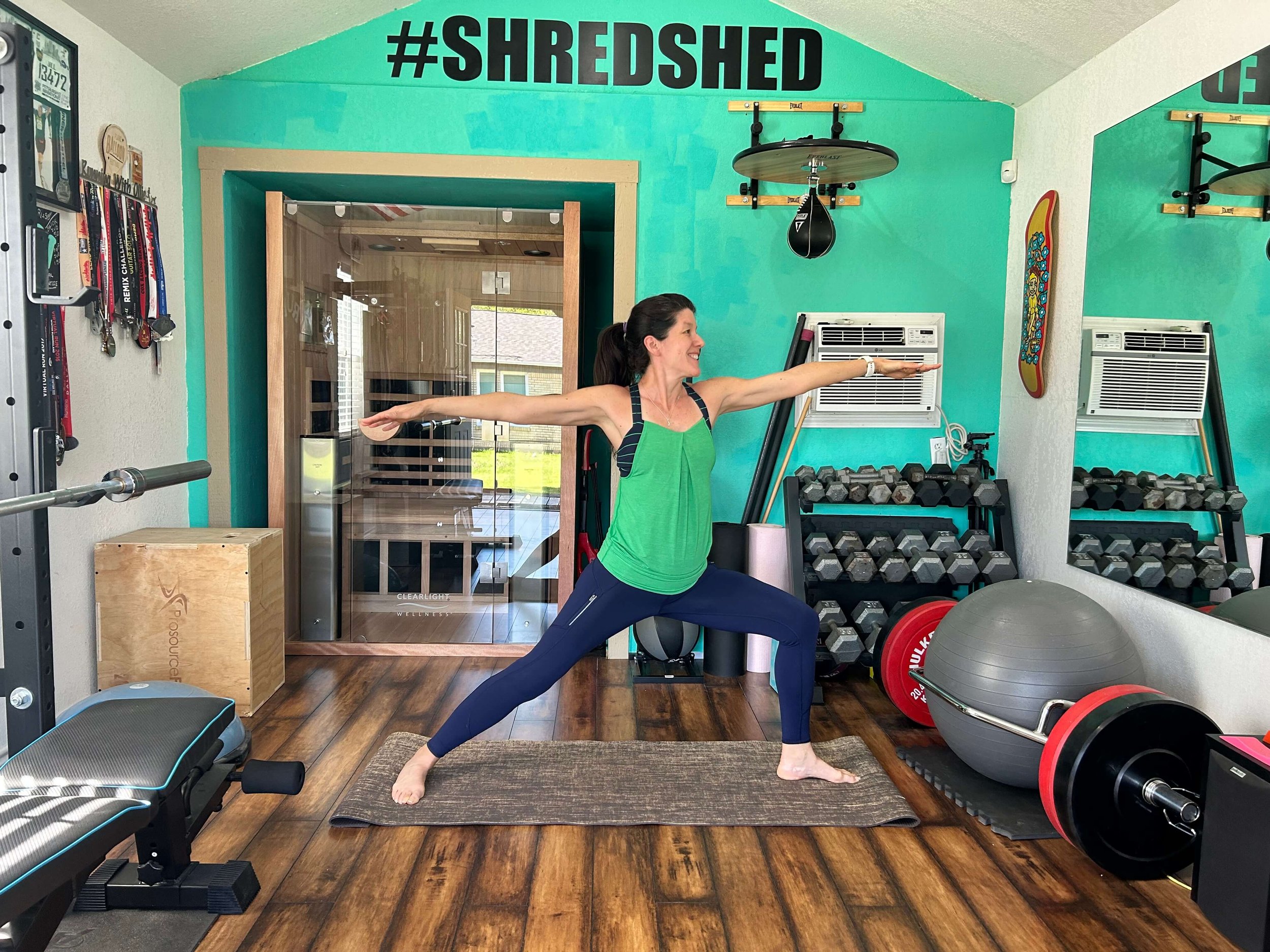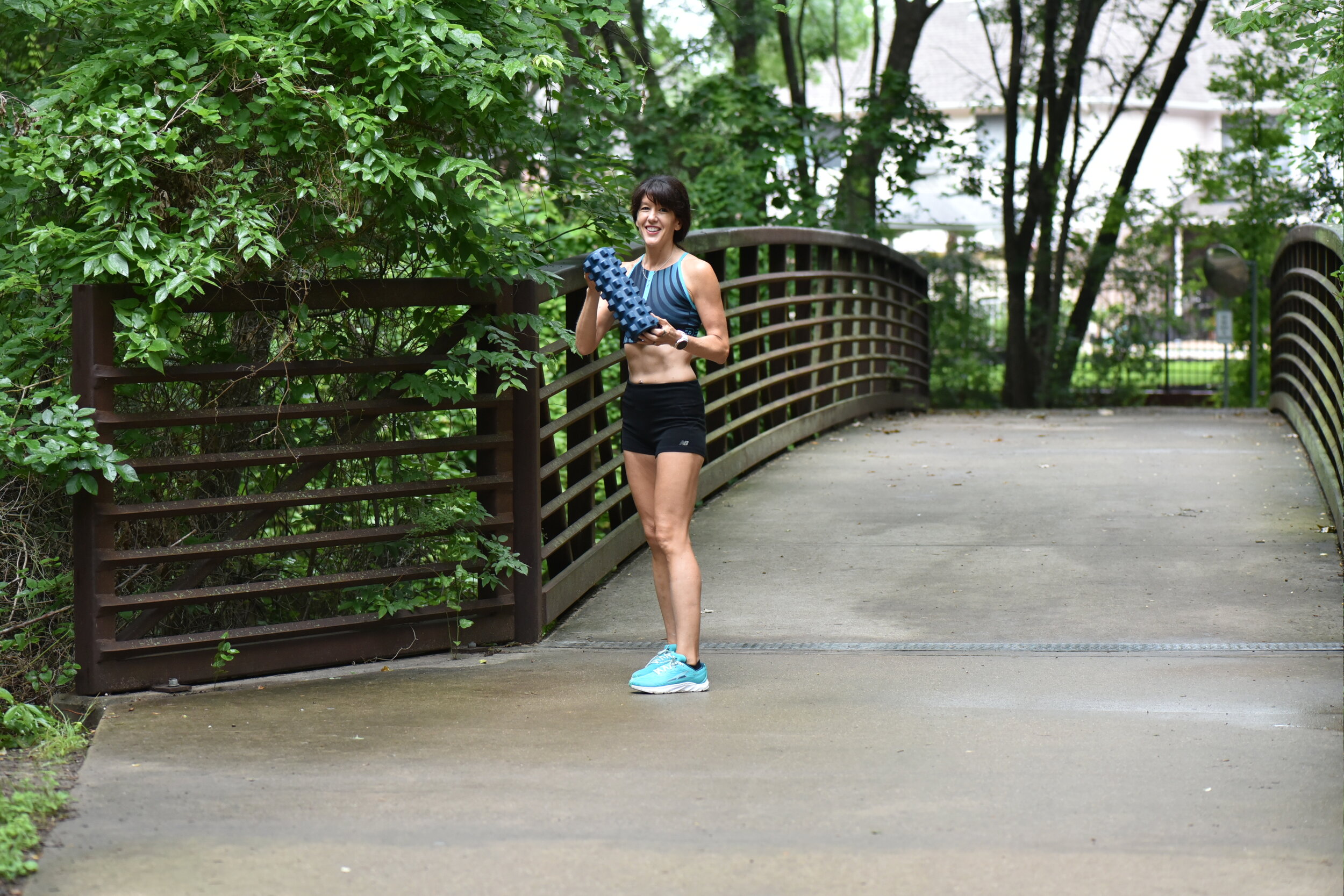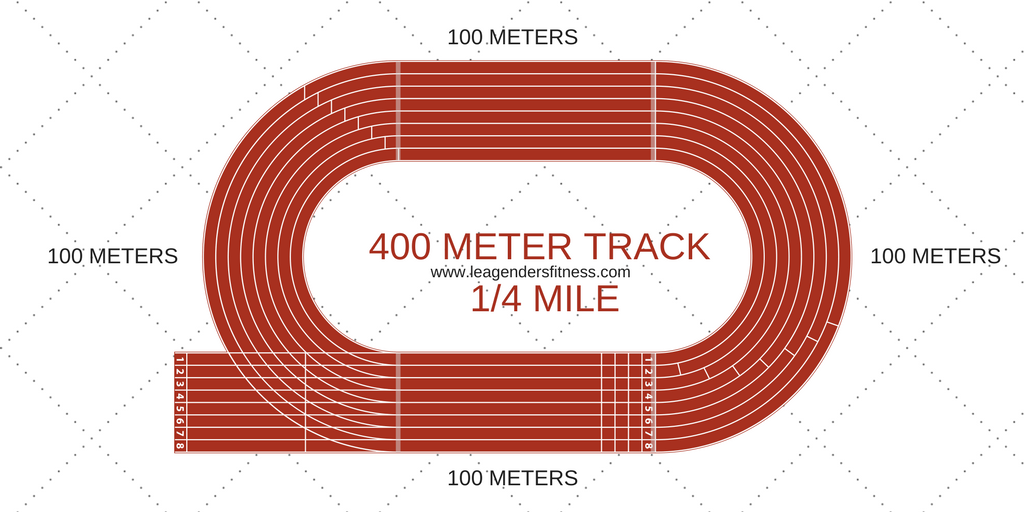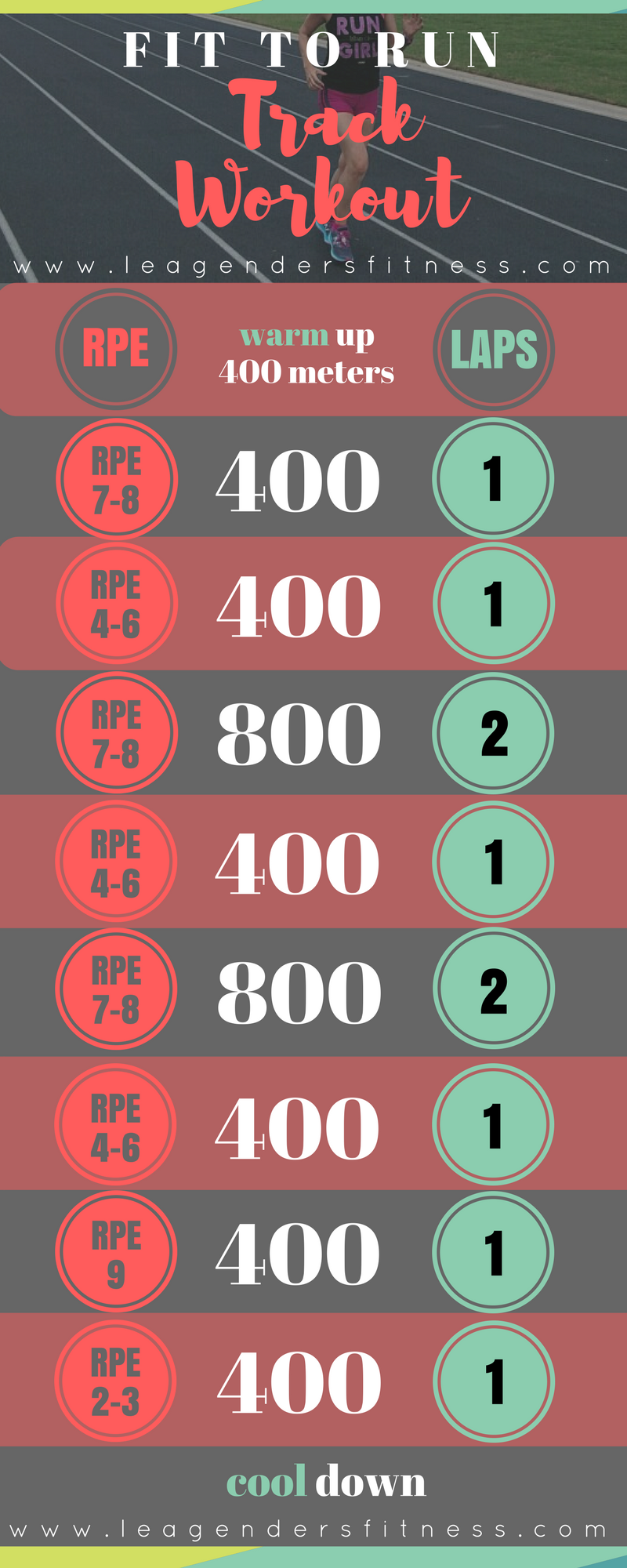Welcome to latest edition of workout Wednesday when each week I share a running or strength training for runners workout. This week we are heading out to the track for a challenging but fun interval track workout! Let's go!
INTERVAL TRACK WORKOUT
A track is like a highway, the left lane is the fast lane. If you are not running fast, yield to the faster runners and move over to the outside lanes. A standard track is 400 meters or a 1/4 mile from the inside lane. Four times around the track in that lane is one mile. This workout will challenge you through 2.25 miles including a warm up and cool down.
I recommend this dynamic warm up before beginning any running workout.
Use the rate of perceived exertion chart to determine your effort level as you complete the workout. The intensity goes up as the distance of the interval goes down. The shorter the distance, the harder you are working. Recover with a brisk walk or jog for the same distance as the work interval.
400 meters around the track one time with a light jog to get warmed up
400 meters around the track one time with a hard effort, but not so hard you can't maintain it
400 meters around the track one time with a light jog or brisk walk to recover
200 meters halfway around the track at an extremely hard effort
200 meters halfway around the track with a light jog or brisk walk to recover
That's one mile. Congratulations.
100 meters 1/4 of the track at an all-out effort on the straights
100 meters 1/4 of the track at a walk to recover on the bends
100 meters 1/4 of the track at an all-out effort on the straights
100 meters 1/4 of the track at a walk to recover on the bends
200 meters halfway around the track at an extremely hard effort
200 meters halfway around the track with a light jog or brisk walk to recover
400 meters around the track one time with a hard effort.
400 meters around the track one time with a light jog or brisk walk to recover
Two miles. Done and done.
Go ahead and take a victory recovery lap. You're done!
Hard workouts like this one should be followed by a day or two of recovery days or easy runs. Never attempt interval workouts on back to back days. Remember that you get stronger and faster during recovery, not during the workout. For maximum results, always allow your body time to recover and rebuild from tough workouts. Most athletes will benefit from just one or two hard effort workouts per week.
Give it a whirl around the track and let me know how it goes!
Like this post? It helps me when you share with your friends and followers.



